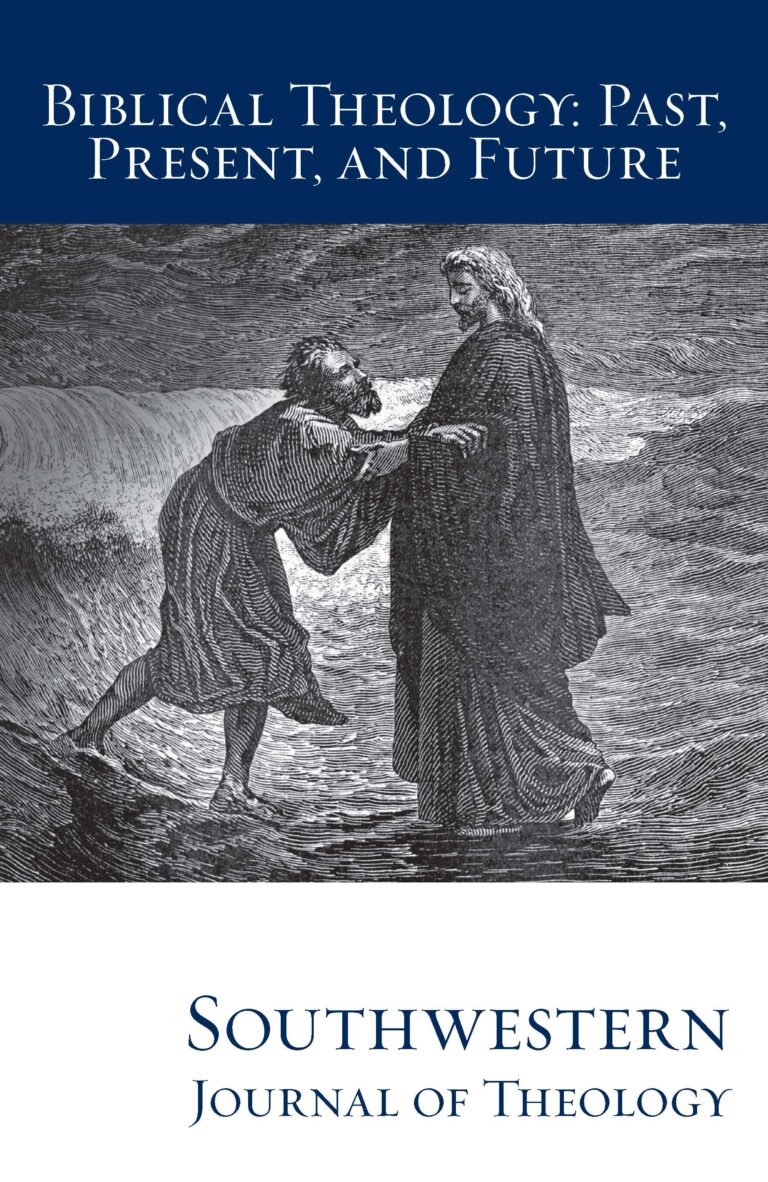
Biblical Theology: Past, Present, and Future (II)
Southwestern Journal of Theology
Volume 56, No. 1 – Fall 2013
Managing Editor: Terry L. Wilder
Nicholas Perrin. Grand Rapids: Baker Academic, 2010. 223 pages. Softcover, $30.00.
In this thought-provoking monograph, Nicholas Perrin attempts to bridge the perceived gap between the historical Jesus and the teachings of Paul and the early church (1). To do so, he looks for the identification of Jesus as the new eschatological temple within the actions of Jesus himself (12). Although other scholars have made this identification, Perrin’s approach is new in: (1) identifying Jesus within the counter-temple movements of his day, and (2) claiming “the imminence of the eschatological temple provided the basic rationale for his most characteristic actions” (15, see also 78-79).
Perrin is Franklin S. Dryness Associate Professor of New Testament at Wheaton College Graduate School. He deftly deals with the New Testament, Old Testament, and Second Temple writings in this interesting book. In chapter one, he compares Jesus’ counter-temple claims with other first-century Jewish sects as well as John the Baptist. In chapter two, he compares Jesus’ claims with the early church’s teachings. Chapters three through five deal with specific actions and accompanying teachings of Jesus: cleansing the temple, actions dealing with the poor, and activities dealing with inaugurating the new temple/kingdom: healings, exorcisms, and meals with controversial friends.
There are a number of strengths in this volume. First, Perrin gives a careful, thoughtful approach to the question of truthfulness of each of the primary biblical passages he interprets. Each time he carefully answers objections and affirms the event’s historicity (e.g., 82-82, 121, 132, 157-58, 173-74). Second, he gives a consistent presentation of his hypothesis that Jesus presented himself and his followers as the new temple—both present and eschatological in nature (13-15, 180, 185-86). Third, he gives a good harmonistic explanation in that when the words and actions in a given text are hard to reconcile, it is likely that if the full message were available today the reconciliation would be much easier to perceive (84). Fourth, Perrin employs helpful descriptive imagery, such as, assigning causation in human decisions is not like single-line trajectories in billiard shots (81), sometimes two broad approaches need not be mutually exclusive since “it is possible for a trail to traverse two faces of a mountain on the way to the top” (89), the Jewish high priesthood was a mix between Columbian drug lords and overpaid boardroom executives (97), and instigating swine running off of the cliff was like throwing snowballs at a team’s mascot (167). However, Perrin wrongly said Jesus drove the swine off of the cliff— the Gospels said the swine themselves caused this action, likely led by the demons (Mark 5:13). Fifth, Perrin retains a humility and tentativeness throughout the book, gently and effectively guiding the reader rather than zealously forcing one to certain conclusions (15, 183).
This reviewer believes Perrin overstates his case. With his tenacious determination and temple-shaped lens, Perrin views all of Jesus’ actions as temple related. Although there are certainly some New Testament typological references as well as allusions to Jesus and his followers as being temple or temple-like, it is a stretch to claim that everything that Jesus did and everything that he asked his followers to do are temple practices (78-79). If Perrin’s hypothesis is correct that Jesus the temple is the overarching New Testament theme, there would be more explicit references to the temple in Jesus’ words and deeds throughout the Gospels; however, at times Perrin has to resort to hidden meanings or associations to make his case, such as in Jesus’ comment about the always-present poor in Mark 14:7 (138-44) or in Jesus’ exorcism at Gadara (164-70). Even if Perrin is correct in his interpretation, it would be helpful to provide the reader with application. Apart from a problematic liberation theology interpretation of Jesus’ dealings with the poor (127, 129, 135-48), there is little for the reader to apply.
Perrin purposefully limits his study to the actions of Jesus, although from time to time he necessarily interprets what Jesus said at some of those events. He believes he can effectively make his case this way (15), and certainly this focus keeps the book shorter. Yet, this reviewer remains unconvinced and believes two purposeful omissions would have helped Perrin’s argument: Jesus’ discourses as well as his death and resurrection. Fortunately, Perrin will deal with these texts in two subsequent volumes. They will be welcome additions to help Perrin try to prove his interesting hypothesis.
Both students and scholars will benefit from a critical reading of Jesus the Temple. It is a good example of how to question a common interpretation of Scripture as well as how to examine and offer a consistent interpretive theme. It is good food for thought.





